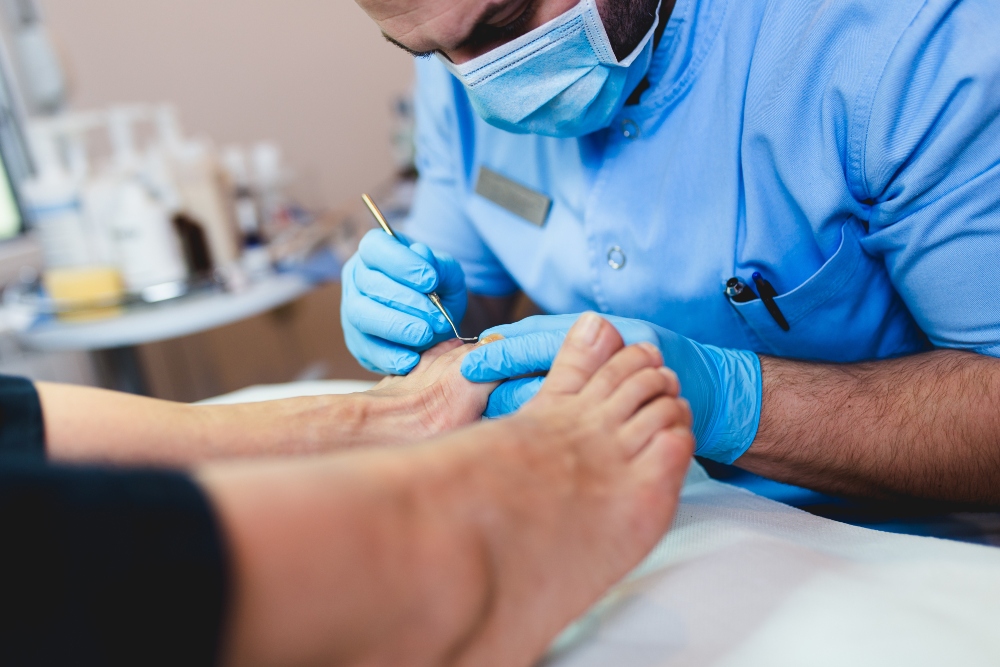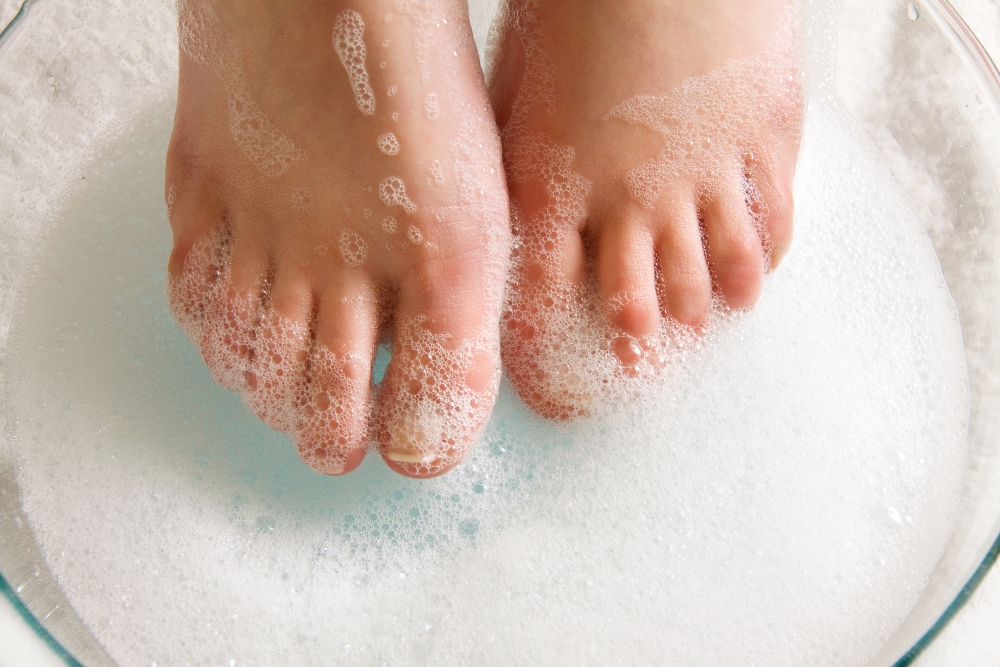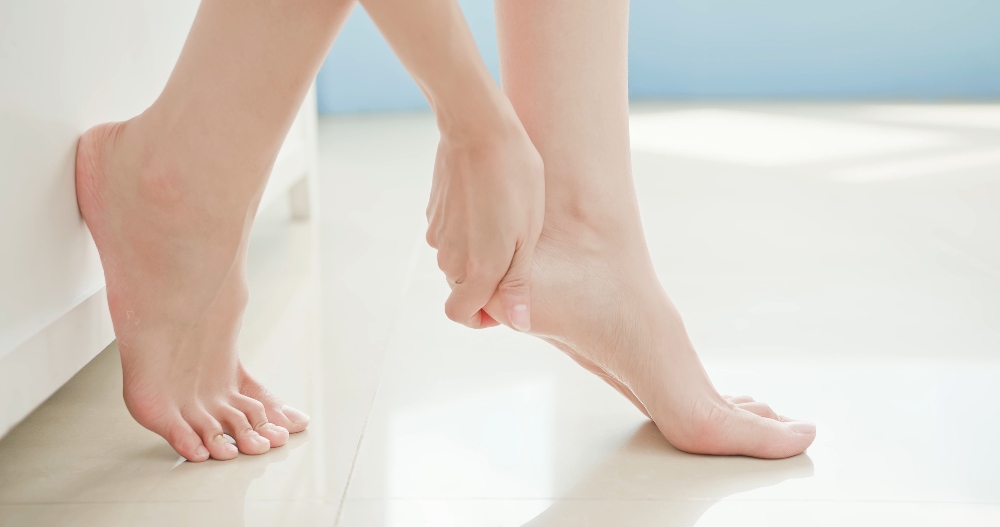A quick Google search of “toe jam” serves some scary Images results. While you’ll likely find queries related to physically jamming your toe into something, you’ll also find some bizarre pictures of feet covered in what appears to be strawberry jelly!
What is toe jam, really? We’re here to answer all your questions about this common foot problem:
What is Toe Jam?
Your ears collect a yellow substance called wax, while your belly button can accumulate lint from your clothing or blankets. So too can your toes collect “jam!”
Toe jam isn’t really a formal medical condition or term. Instead, it’s a collective phrase used to describe the diverse list of stuff that builds up between your toes. This jam isn’t necessarily a gunky substance— like you might imagine by the name.

Toe jam can be a build-up of or caused by:
- Dead skin
- Skin oil or sweat residue
- Corns or calluses
- Dirt or debris
- Lint or fabric fibers
- Skin conditions, like eczema or psoriasis
- Bacterial infections, like erythrasma
- Fungal infections, like Athlete’s foot
Who Gets Toe Jam?
Since the definition of toe jam is so wide, almost anyone can experience toe jam at some point in their life.
The severity of toe jam varies, from a mild build-up of sock lint— easily wiped away— to a harsh outbreak of eczema that requires attentive care.
Generally, those most inclined to accumulate toe jam are individuals with poor hygiene or poor vision, as they do not frequently inspect their feet. It’s often seen in the elderly or diabetic, who cannot reach or have lost feeling in their toes— neglecting to wipe away or tend to conditions that can create toe jam, like psoriasis or a fungal infection.
In addition, those on their feet for long periods of time, who sweat profusely, or who wear shoes with poor ventilation are more susceptible to developing toe jam, according to Rock G. Positano, director of the non-surgical foot center at the Hospital for Special Surgery in New York City.
Treating Toe Jam
Again, since toe jam isn’t its own unique condition, you must get to the root of the problem. If you notice you are collecting something between your toes, inspect the residue.

An accumulation of dead skin may be the cause of flaky, dry patches, or a build-up from rubbing against corns or calluses. Or, if you spend many hours in shoes with poor breathability, you may notice sweat, oil, and moisture collect in the warm nooks between your toes.
Generally, if after wiping the area clean with a warm towel you still find persistent reaccumulation, we advise you to consult a podiatrist. You may have another condition that’s manifesting the jam, like a bacterial or fungal infection. Leaving the area untreated can lead to serious conditions such as cellulitis, which can spread through your body and become life-threatening— so don’t wait.
Preventing Toe Jam
There’s a number of things you can do to reduce the build-up of toe jam or prevent your feet from developing associated infections and skin conditions which can cause toe jam.
Stop toe jam in its tracks by ensuring to:
- Wash your feet daily. Even if you don’t shower or bathe every day, wipe down your feet, including in between your toes, after activity and before bed. Afterward, dry your feet completely. This good hygiene ritual is especially important if you spend a lot of time barefoot, which can leave you more susceptible to getting an infection.
- Attend to corns and calluses. If you suffer from corns and calluses, these dry skin patches can cause a lot of dead skin build-up between the toes. Oftentimes, many see significant improvements by simply using Powerstep orthotics, padding or appropriate shoe gear. A podiatrist can get you fitted.
- Keep your feet dry, but still moisturized. Those who excessively sweat in shoes can line their footwear with a medicated foot powder, or opt for more breathable shoes to allow moisture to escape. This can help prevent the development of fungal infections as well. But don’t let your feet get too dry either! Lotion cracked or chalky skin for relief.

Get Out of Your Jam
Think you might have toe jam?
Because toe jam build-up is often the result of an infection or other foot condition, it’s important to seek a professional opinion if the problem is recurring.
Luckily, we’ve got a full team ready to help. Visit our contact page to make a quick appointment or give us a call today at 239.936.5400.
Categorized in: Blog